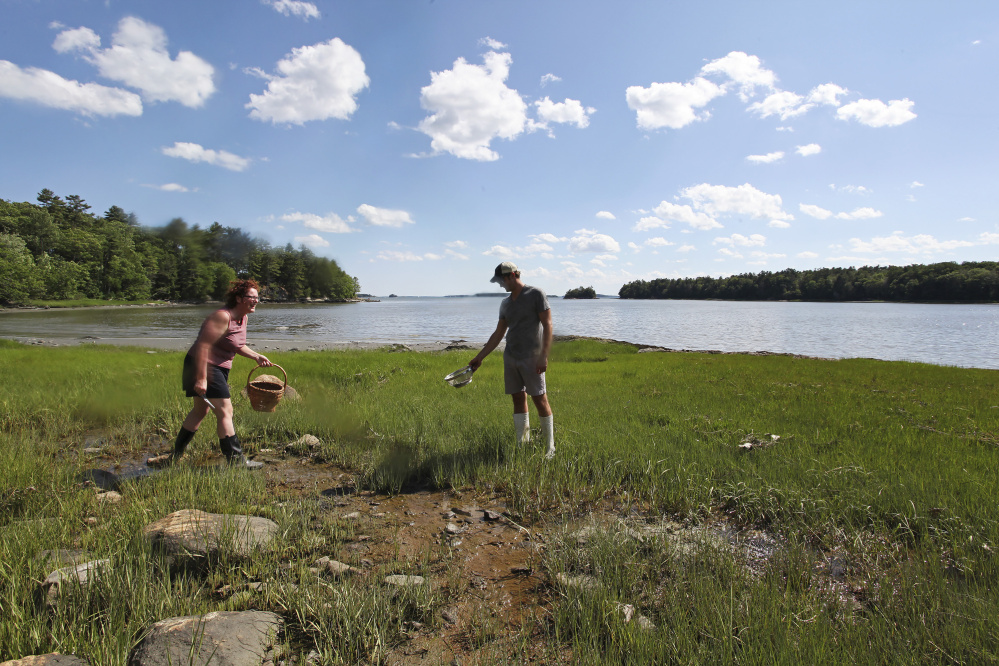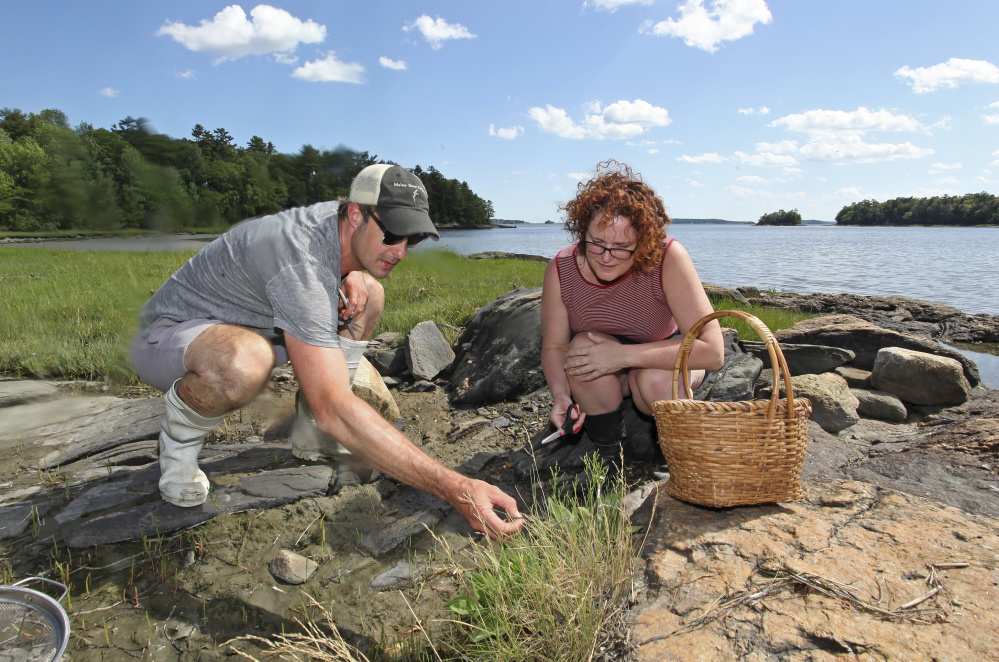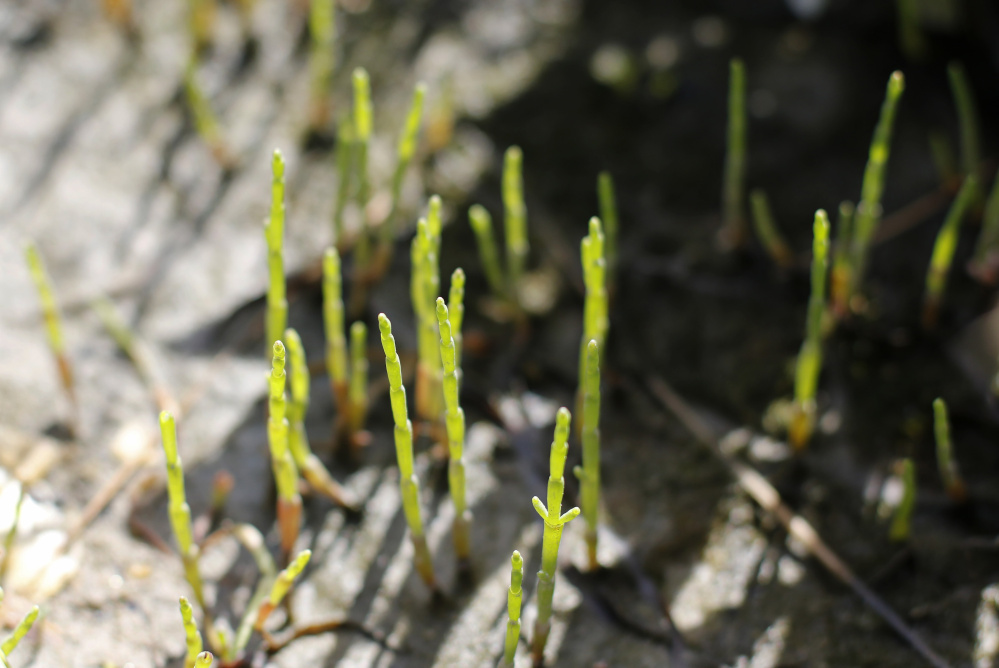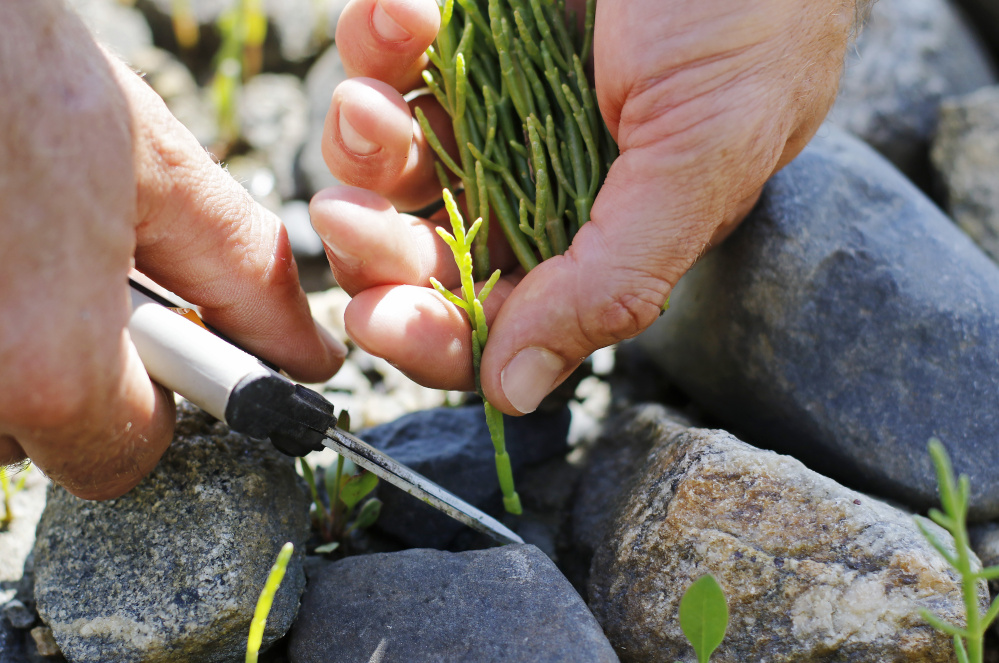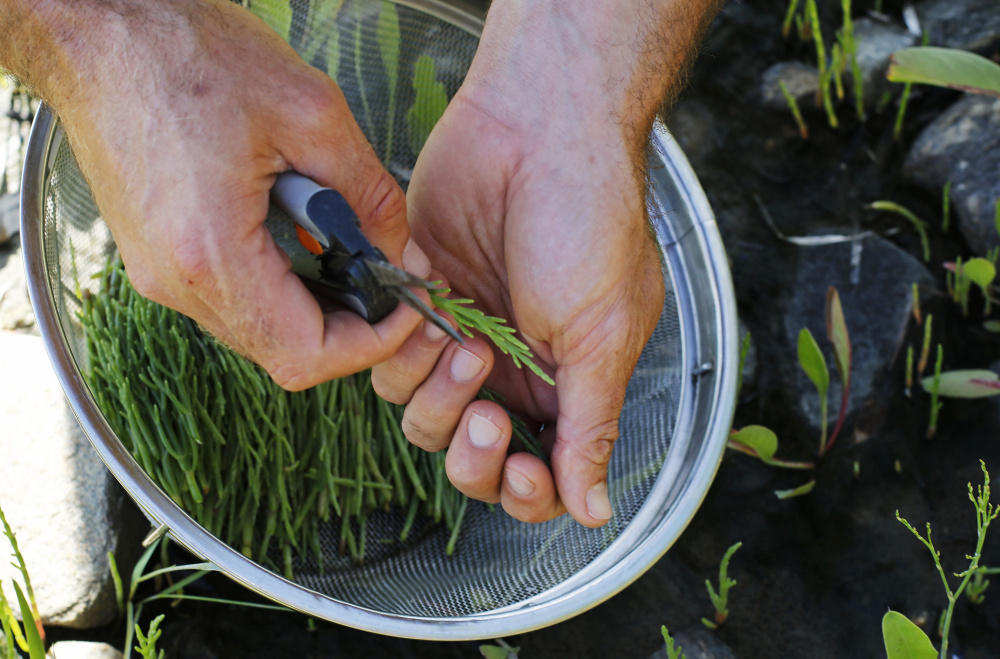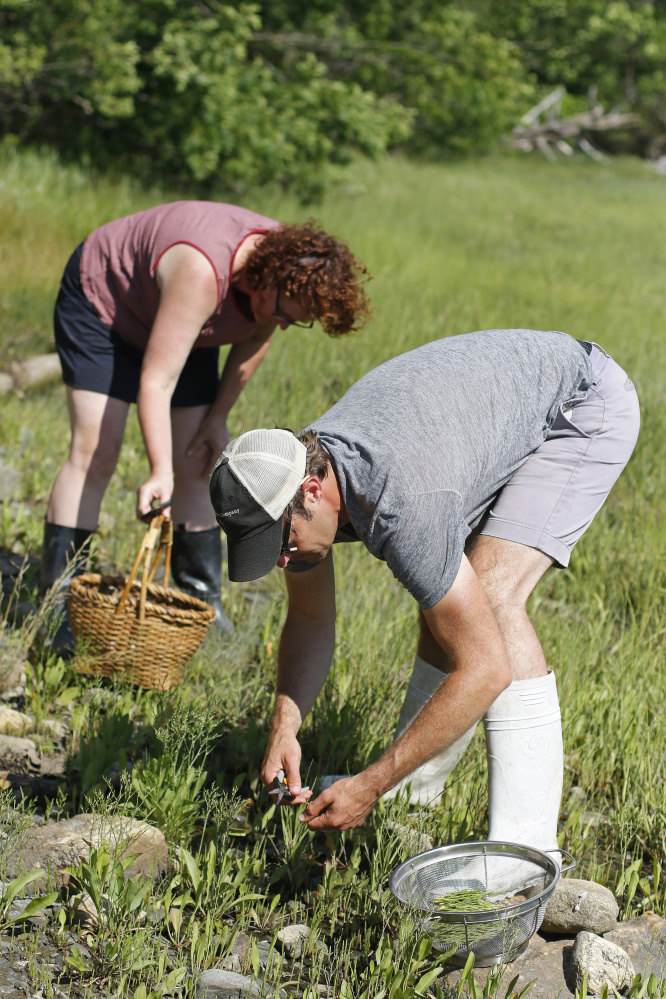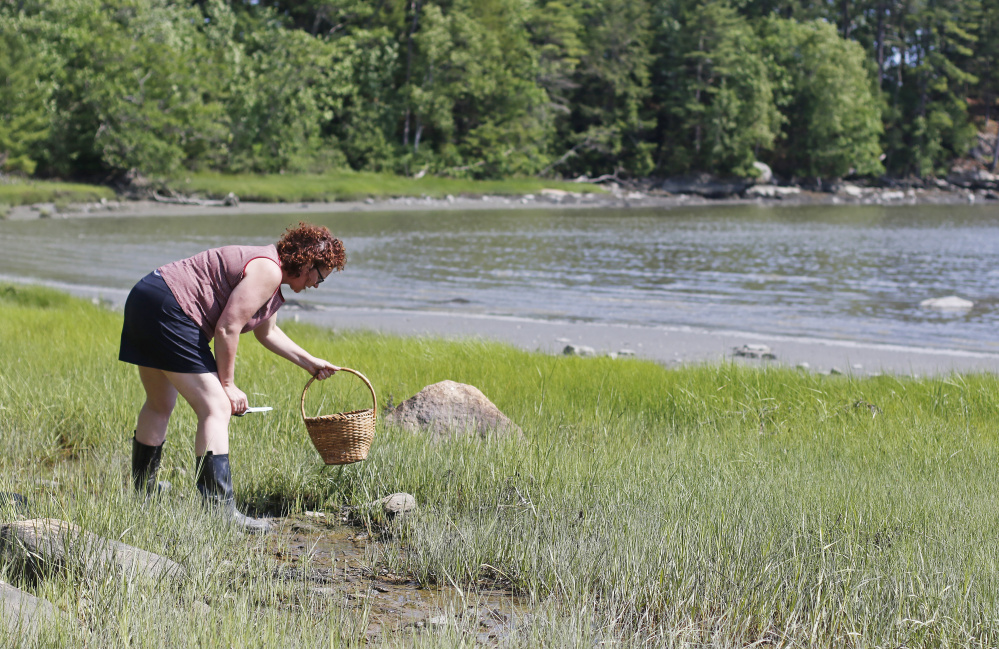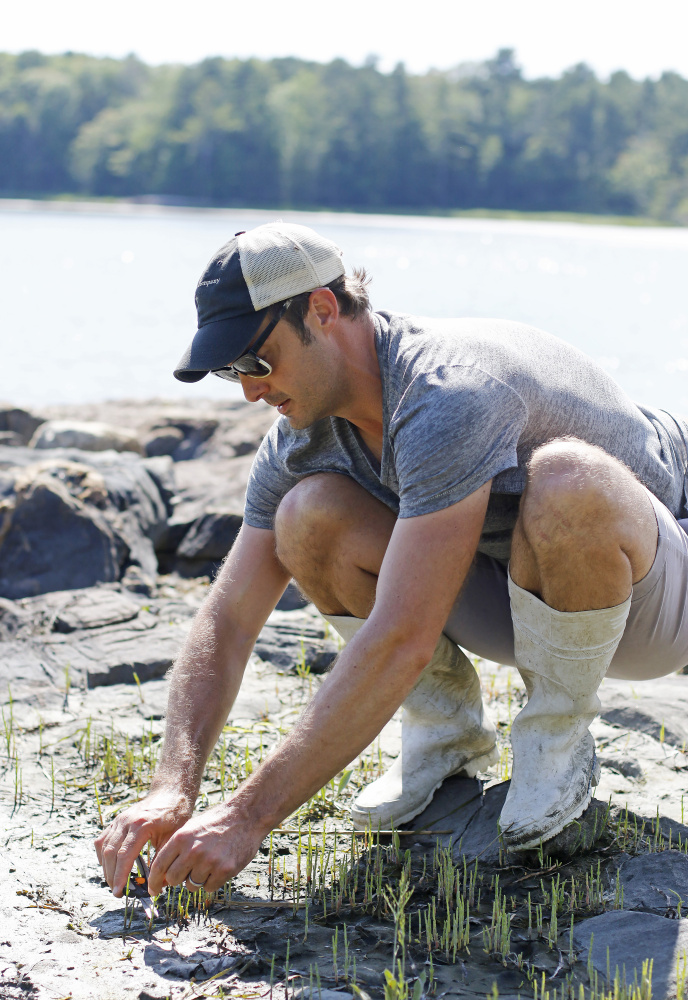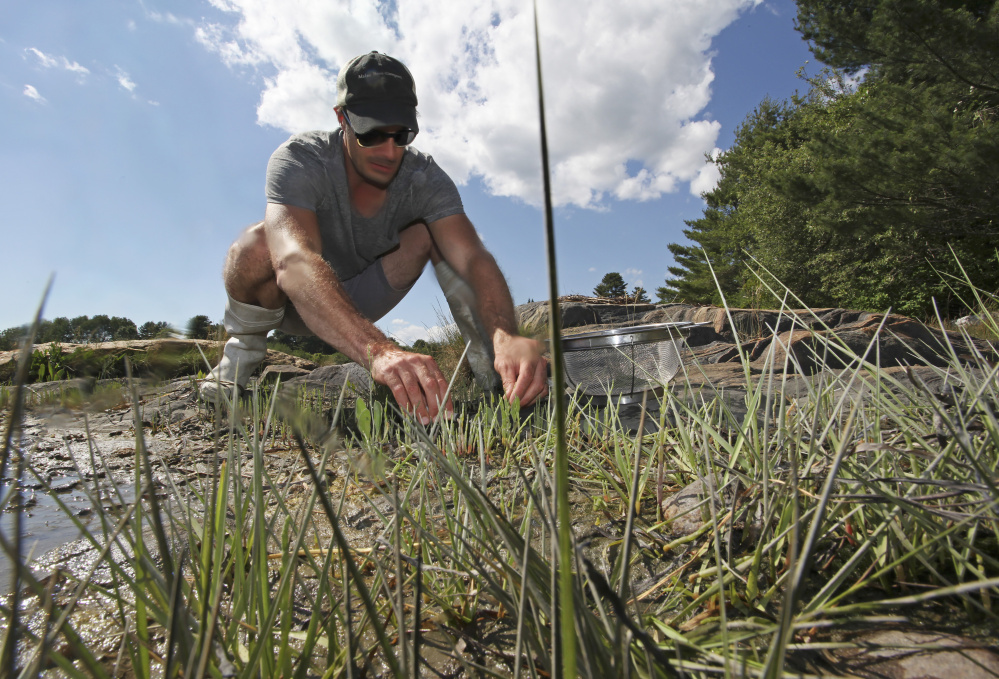The second course served at the Maine Farmland Trust’s “Food for Thought” dinner held at The Freight Shed in Bath last month was called Bait Board. The concept, according to Chef Sam Hayward who created it with Fore Street Chef de Cuisine Nate Nadeau, was to serve humans all the food stripers would eat while running from the sea up the state’s coastal rivers to spawn. Atop a long wooden plank, spanning each table of eight diners, was an artful pile of farmed, foraged and wild-caught food: smoked eel, grilled Atlantic mackerel, marinated squid salad, periwinkles, smoked mussels, sautéed sugar kelp – and pickled sea beans.
Sea beans? To me, they looked an awful lot like something called samphire, a sea green I used to buy at the fishmonger when I’d lived near the Norfolk coast in England. The succulent, salty, skinny sea vegetables were a perfect complement to the rich, hot-smoked salmon I’d buy there too. I’d never eaten the greens on this side of the pond, though.
It was indeed samphire, foraged from a spot in Cape Elizabeth, Hayward said. Turns out this sea vegetable – found in abundance in many coastal areas in the northern hemisphere – goes by many names. Salicornia in Latin. Glasswort and sea asparagus, the last because its 3- to 4-inch shoots push up through coastal marsh mud looking like miniature asparagus. In 16th-century England, it was used to make both glass and soap.
Like many sea vegetables (the term many chefs use these days for seaweed), these too, are touted for their nutritive value. While having almost no fat, samphire is packed with essential minerals like magnesium, potassium, calcium and sodium. They’ve got a healthy amount of dietary fiber and vitamins A, B and C. And they contain compounds called fucoidans that scientists say can have anti-inflammatory and antioxidant effects.
It’s best to pick sea beans shortly after the tide has receded, explained chef and sustainable seafood expert Barton Seaver, who took me foraging at a favorite spot near his Freeport home. They will be at their most succulent then. He snips them just above the mud, piles them neatly into a colander, and refreshes them with a dip in seawater before bringing them home.
When I asked about prudent foraging practices for sea beans, in other words leaving enough behind to ensure the continuation of the stock, he said their highly salty taste and tendency to lose their attractive crunch quickly, act as deterrents to overharvesting. Sea beans are like Doritos, Seaver said. Ten on your plate is a great thing. But that eleventh one becomes salty overkill.
He did advise, though, that foragers be careful where they step or they’ll crush more underfoot than they take away to eat.
Seaver likes to blanch the sea beans for about 10 seconds in boiling water before shocking them with ice water to seal in their bright green color and dial down the saltiness. He’ll then use them in salads with shaved fennel and carrot ribbons or sautéed with red onion and almonds and brightened with black pepper.
Sea beans are best eaten the day you harvest them, but can last a day longer wrapped in a damp towel and stored in the refrigerator. Quick pickling them (see recipe), will help keep sea beans around for a week or two until you’ve got time to revisit a nearby marshy patch for more.
PICKLED SEA BEANS
I added almonds here on the advice of chef, sustainable seafood expert and South Freeport resident Barton Seaver. Soaked first in hot water to soften before getting pickled, the nuts made a sweet, creamy complement to the snap and salt of the sea beans. Use these pickles on top of salmon burgers, as a condiment on a local cheese plate, or as a side to a smoked seafood dish.
Makes 2 1/2 cups
1/2 cup blanched almonds
4 ounces fresh well-washed sea beans (about 2 cups)
1/4 cup white or red wine vinegar
2 teaspoons raw sugar
1 teaspoon kosher salt
10 peppercorns
3 sprigs thyme
4 garlic scape buds or 2 peeled garlic cloves
1 bay leaf
Cover the almonds with boiling water. Let sit for 30 minutes to soften. Drain and set aside to cool.
Place almonds in a quart-size jar with the sea beans.
Bring 11/2 cups water, the vinegar, sugar, salt, peppercorns, thyme, garlic and bay leaf to a boil in a medium pan over medium-high heat. Stir to dissolve the sugar and salt. Pour the hot liquid into the jar with the sea beans and almonds, affix the lid, and let the contents of the jar come to room temperature before placing it in the refrigerator. Let it sit in the refrigerator overnight before eating. Pickled samphire will stay crisp for about 2 weeks.
CHRISTINE BURNS RUDALEVIGE is a food writer, a recipe developer and tester and a cooking teacher in Brunswick, and the author of “Green Plate Special,” a new cookbook from Islandport Press based on these columns. She can be contacted at: cburns1227@gmail.com.
Send questions/comments to the editors.

